Personal life
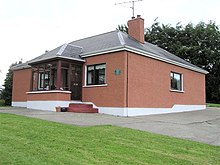

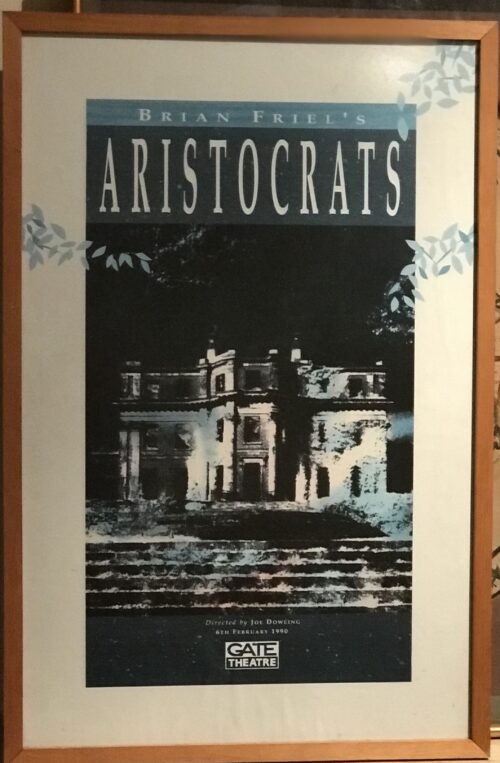



The Munster hurling final day is one of the great occasions in Irish sport.Be it Semple Stadium, the Gaelic Grounds or in Páirc Uí Chaoimh, it is a huge date on the provincial and national stage.It is a well-documented fact that on Munster final day, carloads of supporters would travel from the Glens of Antrim to Thurles to view the protagonists in action.
It’s 30 years ago now but it was a similar situation in 1990 when the two old foes collided on a scalding July day in Thurles .Tipperary had the MacCarthy Cup in their possession back then too having beaten Antrim in the All-Ireland final the previous September.Cork, on the other hand, were down in the dumps having lost to what proved to be a very poor Waterford team in 1989, a Waterford team that were subsequently hammered by Tipp in the Munster final.Cork went into the Munster final in 1990 as raging underdogs, almost no-hopers against the reigning All-Ireland champions.But it was a different Cork team that they were facing this time. In attitude as much as anything, as Teddy McCarthy and Tomás Mulcahy were both out for the provincial decider through injury.

The Canon and Gerald brought a fresh and renewed impetus to the Cork set up, brought back a few players who had been discarded and going up to Thurles there was a calm and cautiously optimistic approach.
For Cork to be in the hunt they needed a positive start to have any chance of outright victory, they needed to unsettle Tipp early on and that is exactly what transpired.
Cork started brilliantly, inspired by Jim Cashman who was a dominant figure at centre-back, while Tony O’Sullivan, later Hurler of the Year, was hugely influential at wing-forward, as the below clip from the @corkhurlers1 twitter shows.A Tipperary laden with great players like Nicky English, Pat Fox, the Bonner brothers, Declan Ryan, John Leahy and Bobby Ryan quickly realised that this was a different Cork team than the one who had went down so meekly to Waterford a year earlier.
The Cork crowd really got behind the team and as the game progressed an unlikely hero was to emerge from a small club in West Cork.
Argedeen Rangers’ Mark Foley had one of those magical days that you could only ever dream about. Everything ‘The Dentist’ touched turned to gold, there was no holding him.

Tipp couldn’t cope and the rest is history as Cork swept to one of their greatest Munster Final triumphs.
One can recall sitting in the Ryan Stand that day with Cork Examiner sports editor Tom Aherne and both of us losing the run of ourselves surrounded by Tipp supporters who were in a state of shock. Foley’s performance that day has stood the test of time as one of the greatest individual displays ever given in a Munster Final or otherwise.
But there were heroes everywhere, from Ger Cunningham out. Teddy McCarthy, John Fitzgibbon, Tomás Mulcahy, Kevin Hennessy, Denis Walsh, Ger Fitzgerald, Tony O’Sullivan to mention just a handful.
Jim Cashman had the game of his life at number six completely stifling Declan Ryan. But it was Foley’s day.
That performance would be nearly impossible to repeat but in the All Ireland final against Galway he scored 1-1 which was a major contribution as Cork regained the McCarthy Cup.
Tipp exacted revenge a year later in a Munster final replay when Jim Cashman was controversially taken out of the game.
The Cork Tipp rivalry was as intense as it ever was back then and Cork won back the Munster final in 1992.
The Cork team that day in 1990 was: G Cunningham; J Considine, D Walsh, S O’Gorman; S McCarthy, J Cashman, K McGuckin; P Buckley, B O’Sullivan; D Quirke, M Foley, T O’Sullivan; G Fitzgerald, K Hennessy, J Fitzgibbon
Scorers: Mark Foley 2-7, John Fitzgibbon 2-0, Tony O’Sullivan 0-5, Cathal Casey, Ger Fitzgerald, Kevin Hennessy, David Quirke 0-1 each.

In the All-Ireland final a short few months later Cork defeated Galway in a seven-goal thriller in Croke Park, winning in a scoreline of 5-15 to 2-21.
The Cork scorers that day were: John Fitzgibbon 2-1, Kevin Hennessy 1-4, Tomás Mulcahy 1-2, Mark Foley 1-1, Teddy McCarthy 0-3, Tony O’Sullivan 0-2, Ger Fitzgerald, Kieran McGuckin 0-1 each.

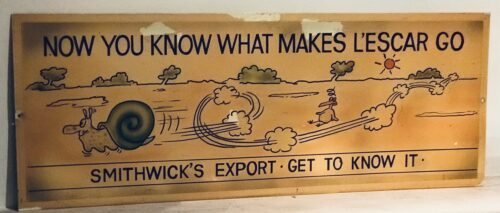





 Charlton had beaten late entrant Bob Paisley, a multiple trophy winner, to the FAI hot seat, and his introduction to the gathered press was a million miles away from the carefully staged managed productions of the modern day.
In fact, it almost turned into an impromptu David Haye and Tony Bellew pre-match fight when Charlton challenged hardened journalist and ex-international Eamon Dunphy’s line of questioning. That relationship turned increasingly sour as time went by.
Charlton had beaten late entrant Bob Paisley, a multiple trophy winner, to the FAI hot seat, and his introduction to the gathered press was a million miles away from the carefully staged managed productions of the modern day.
In fact, it almost turned into an impromptu David Haye and Tony Bellew pre-match fight when Charlton challenged hardened journalist and ex-international Eamon Dunphy’s line of questioning. That relationship turned increasingly sour as time went by.
 This was the blueprint – or greenprint – of the Irish national team for the next decade.
Former players like Johnny Giles thought this indicated a lack of trust in the ability of players. Charlton saw it as pragmatic. His idea was to keep information and instruction simple.
This was the blueprint – or greenprint – of the Irish national team for the next decade.
Former players like Johnny Giles thought this indicated a lack of trust in the ability of players. Charlton saw it as pragmatic. His idea was to keep information and instruction simple.
 After a 1-0 defeat to Wales in his first match in charge, Charlton got to work on qualifying for the 1988 European Championship in West Germany.
After a 1-0 defeat to Wales in his first match in charge, Charlton got to work on qualifying for the 1988 European Championship in West Germany.
 While England staggered to defeat against the USSR and Holland, the Irish matched both teams stride for stride. Houghton described the 1-1 draw against the Soviets as “one of the best performances I’ve ever been involved in with Jack’s teams”.
While England staggered to defeat against the USSR and Holland, the Irish matched both teams stride for stride. Houghton described the 1-1 draw against the Soviets as “one of the best performances I’ve ever been involved in with Jack’s teams”.
 A 1-1 draw with the Dutch meant both teams had identical records as all three of Holland, England and Ireland progressed, with the Irish benefiting from the drawing of lots to qualify as group runners-up
After three drab stalemates, the party only truly began in Genoa against Romania in the last 16 – after another goalless game, Bonner saved Romania’s fifth penalty, leaving David O’Leary to take the decisive kick.
RTE commentator George Hamilton uttered the most important seven words Irish fans remember: “A nation holds its breath… We’re there!”
How ironic that the hero was O’Leary, another more football-minded defender that was often overlooked by Charlton.
O’Leary recalled: “There were about 20,000 brilliant Irish supporters behind the goal. They were so still and the eruption of green afterwards when the ball hit the net was absolutely amazing. It’s a fantastic memory.”
A 1-1 draw with the Dutch meant both teams had identical records as all three of Holland, England and Ireland progressed, with the Irish benefiting from the drawing of lots to qualify as group runners-up
After three drab stalemates, the party only truly began in Genoa against Romania in the last 16 – after another goalless game, Bonner saved Romania’s fifth penalty, leaving David O’Leary to take the decisive kick.
RTE commentator George Hamilton uttered the most important seven words Irish fans remember: “A nation holds its breath… We’re there!”
How ironic that the hero was O’Leary, another more football-minded defender that was often overlooked by Charlton.
O’Leary recalled: “There were about 20,000 brilliant Irish supporters behind the goal. They were so still and the eruption of green afterwards when the ball hit the net was absolutely amazing. It’s a fantastic memory.”
 Ireland’s propensity to draw a large proportion of games (30 out of 93 under Charlton) cost them dearly in the 1992 Euro qualifying group as only eight teams could qualify for Sweden.
They finished behind Graham Taylor’s stodgy England team, despite drawing home and away against them.
However, the Republic were reaching a new peak, with a young Roy Keane and Denis Irwin introduced to the team.
“The worst thing about missing out on Euro 92 was that Denmark won it. It should have been Ireland.” recalled a frustrated manager.
Ireland’s propensity to draw a large proportion of games (30 out of 93 under Charlton) cost them dearly in the 1992 Euro qualifying group as only eight teams could qualify for Sweden.
They finished behind Graham Taylor’s stodgy England team, despite drawing home and away against them.
However, the Republic were reaching a new peak, with a young Roy Keane and Denis Irwin introduced to the team.
“The worst thing about missing out on Euro 92 was that Denmark won it. It should have been Ireland.” recalled a frustrated manager.
 In the USA, the party started early in New York as Italy were beaten in the Big Apple by a Houghton strike.
Patrick Barclay summed it up best in The Observer: “Ireland’s blanket defence rendered vain all the creative endeavours of Roberto Baggio, who adorned this marvellous occasion but was not allowed to influence it because for 90 mins Jack Charlton’s sweat-soaked soldiers stayed about as close as ranks can get.”
Unfortunately, Ireland’s performances tailed off dramatically for the remainder of the tournament.
Such draining tactics were hard to administer in the humidity of Orlando, and the manager was banned from the touchline for venting his fury at officials over the lack of water for his troops against Mexico.
After squeezing through the group following a goalless draw with Norway, the Green bus ran out of fuel against the Dutch in the last 16.
In the USA, the party started early in New York as Italy were beaten in the Big Apple by a Houghton strike.
Patrick Barclay summed it up best in The Observer: “Ireland’s blanket defence rendered vain all the creative endeavours of Roberto Baggio, who adorned this marvellous occasion but was not allowed to influence it because for 90 mins Jack Charlton’s sweat-soaked soldiers stayed about as close as ranks can get.”
Unfortunately, Ireland’s performances tailed off dramatically for the remainder of the tournament.
Such draining tactics were hard to administer in the humidity of Orlando, and the manager was banned from the touchline for venting his fury at officials over the lack of water for his troops against Mexico.
After squeezing through the group following a goalless draw with Norway, the Green bus ran out of fuel against the Dutch in the last 16.

 It is sometimes opined in retrospect that the Republic could have done better with the quality of players at their disposal. They only won one of nine World Cup matches, scoring just four goals.
After USA’ 94, Dunphy said: “The minority who know their football well enough to distinguish between fact and fantasy have long since decided that even though the show is great, the football of the Charlton era has been, too often, lousy.”
But would liberation have taken away the organisational pragmatism that was central to the Green Wall being breached just 41 times in 93 games? After all, this was a team that also beat Brazil at home and Germany in Hannover.
Niall Quinn said: “We were happy as we were – beautiful, skilled losers.”
Big Jack made them coarse but clinical winners on the pitch and a lot happier off it.
11 of Jack Charlton’s best quotes: ‘Can we go now please? I’d like a beer’
It is sometimes opined in retrospect that the Republic could have done better with the quality of players at their disposal. They only won one of nine World Cup matches, scoring just four goals.
After USA’ 94, Dunphy said: “The minority who know their football well enough to distinguish between fact and fantasy have long since decided that even though the show is great, the football of the Charlton era has been, too often, lousy.”
But would liberation have taken away the organisational pragmatism that was central to the Green Wall being breached just 41 times in 93 games? After all, this was a team that also beat Brazil at home and Germany in Hannover.
Niall Quinn said: “We were happy as we were – beautiful, skilled losers.”
Big Jack made them coarse but clinical winners on the pitch and a lot happier off it.
11 of Jack Charlton’s best quotes: ‘Can we go now please? I’d like a beer’


| Clare | 1-17 – 0-11 | Limerick |
|---|---|---|
| J. O'Connor (0-6), P. J. Connell (0-4), D. FitzGerald (1-0), C. Clancy (0-2), S. McMahon (0-1), F. Tuohy (0-1), F. Hegarty (0-1), S. McNamara (0-1), G. O'Loughlin (0-1). | Report | G. Kirby (0-6), M. Galligan (0-3), P. Heffernan (0-1), F. Carroll (0-1). |

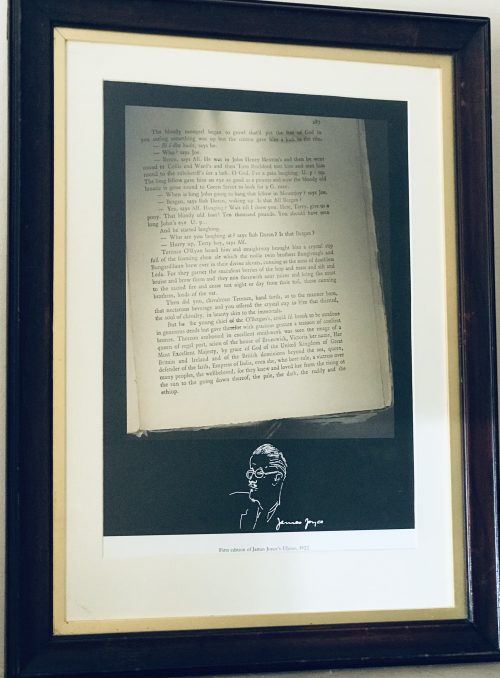
|
James Joyce |
|
|---|---|

Joyce in Zürich, c. 1918 |
|
| Born | James Augustine Aloysius Joyce 2 February 1882 Rathgar, Dublin, Ireland |
| Died | 13 January 1941 (aged 58) Zürich, Switzerland |
| Resting place | Fluntern Cemetery, Zürich |
| Occupation | Novelist |
| Language | English |
| Residence | Trieste, Paris, Zürich |
| Nationality | Irish |
| Citizenship | Irish |
| Alma mater | University College Dublin |
| Period | 1914–1939 |
| Genre | Novels, Short stories, Poetry |
| Literary movement | Modernism |
| Notable works | Dubliners Ulysses A Portrait of the Artist as a Young Man Finnegans Wake |
| Years active | 1904–1940 |
| Spouse | Nora Barnacle (1931 – his death) |
| Children | Lucia, Giorgio |
|
|
|
| Signature | |


My mind rejects the whole present social order and Christianity—home, the recognised virtues, classes of life and religious doctrines. ... Six years ago I left the Catholic church, hating it most fervently. I found it impossible for me to remain in it on account of the impulses of my nature. I made secret war upon it when I was a student and declined to accept the positions it offered me. By doing this I made myself a beggar but I retained my pride. Now I make open war upon it by what I write and say and do.When the arrangements for Joyce's burial were being made, a Catholic priest offered a religious service, which Joyce's wife, Nora, declined, saying, "I couldn't do that to him." Leonard Strong, William T. Noon, Robert Boyle and others have argued that Joyce, later in life, reconciled with the faith he rejected earlier in life and that his parting with the faith was succeeded by a not so obvious reunion, and that Ulysses and Finnegans Wake are essentially Catholic expressions. Likewise, Hugh Kenner and T. S. Eliot believed they saw between the lines of Joyce's work the outlook of a serious Christian and that beneath the veneer of the work lies a remnant of Catholic belief and attitude. Kevin Sullivan maintains that, rather than reconciling with the faith, Joyce never left it.Critics holding this view insist that Stephen, the protagonist of the semi-autobiographical A Portrait of the Artist as a Young Man as well as Ulysses, is not Joyce. Somewhat cryptically, in an interview after completing Ulysses, in response to the question "When did you leave the Catholic Church", Joyce answered, "That's for the Church to say." Eamonn Hughes maintains that Joyce takes a dialectic approach, both affirming and denying, saying that Stephen's much noted non-serviam is qualified—"I will not serve that which I no longer believe...", and that the non-serviam will always be balanced by Stephen's "I am a servant..." and Molly's "yes".He attended Catholic Mass and Orthodox Divine Liturgy, especially during Holy Week, purportedly for aesthetic reasons. His sisters noted his Holy Week attendance and that he did not seek to dissuade them. One friend reported that Joyce cried "secret tears" upon hearing Jesus' words on the cross and another suggested that he was a "believer at heart" because of his frequent attendance at church. Umberto Eco compares Joyce to the ancient episcopi vagantes (wandering bishops) in the Middle Ages. They left a discipline, not a cultural heritage or a way of thinking. Like them, the writer retains the sense of blasphemy held as a liturgical ritual. Some critics and biographers have opined along the lines of Andrew Gibson: "The modern James Joyce may have vigorously resisted the oppressive power of Catholic tradition. But there was another Joyce who asserted his allegiance to that tradition, and never left it, or wanted to leave it, behind him." Gibson argues that Joyce "remained a Catholic intellectual if not a believer" since his thinking remained influenced by his cultural background, even though he lived apart from that culture.His relationship with religion was complex and not easily understood, even perhaps by himself. He acknowledged the debt he owed to his early Jesuit training. Joyce told the sculptor August Suter, that from his Jesuit education, he had 'learnt to arrange things in such a way that they become easy to survey and to judge.'
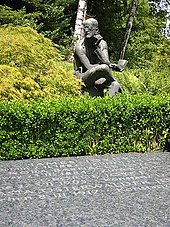







| Position | Nation | Games | Points | Table points | |||||
|---|---|---|---|---|---|---|---|---|---|
| Played | Won | Drawn | Lost | For | Against | Difference | |||
| 1 | 4 | 4 | 0 | 0 | 61 | 9 | +52 | 8 | |
| 2 | 4 | 2 | 0 | 2 | 33 | 32 | +1 | 4 | |
| 2 | 4 | 2 | 0 | 2 | 29 | 36 | −7 | 4 | |
| 4 | 4 | 1 | 0 | 3 | 22 | 38 | −16 | 2 | |
| 4 | 4 | 1 | 0 | 3 | 19 | 49 | −30 | 2 | |
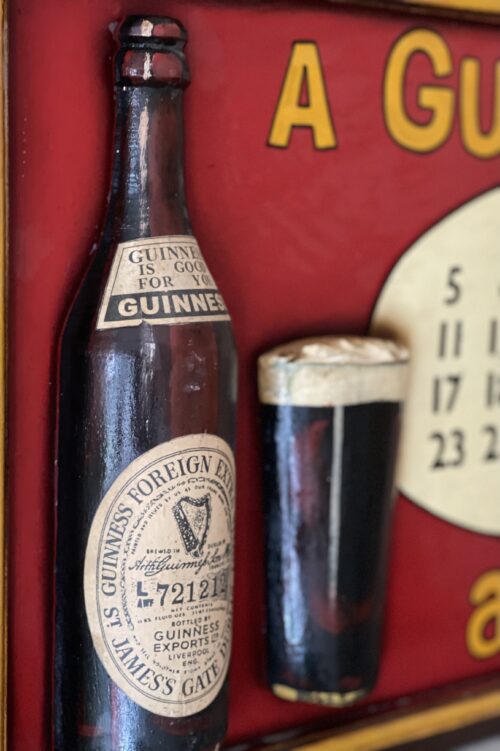

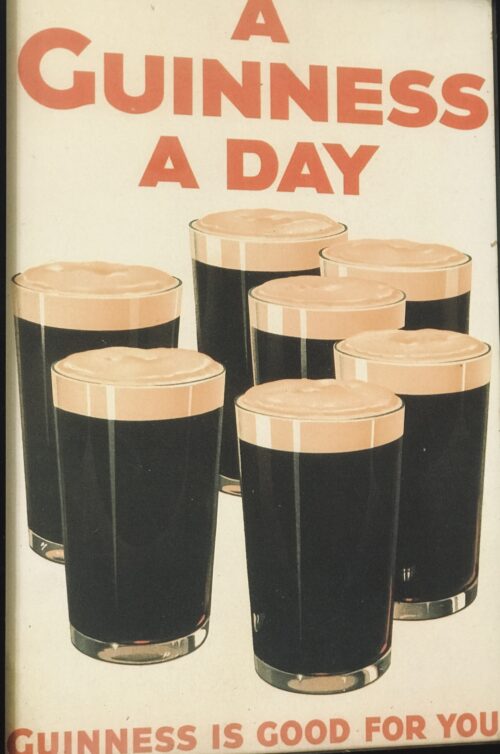
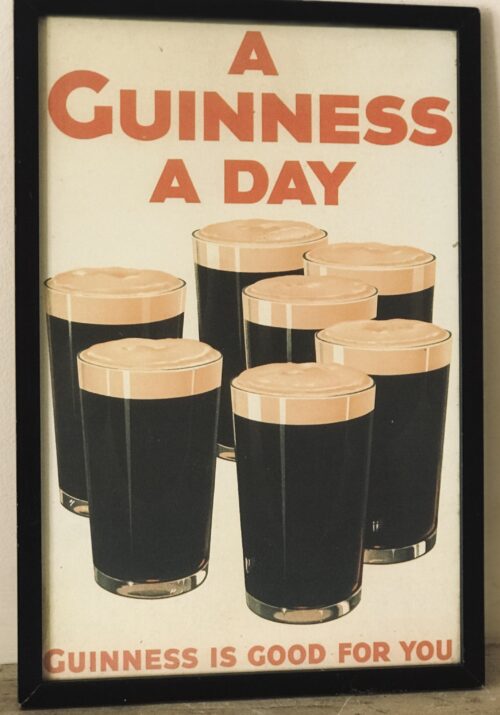



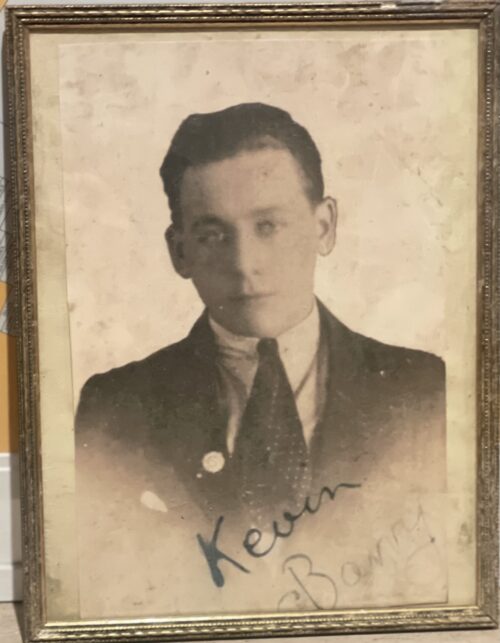
This morning a party of one N.C.O. and six men of the Duke of Wellington's Regiment were fired on by a body of civilians outside a bakery in Church Street, Dublin. One soldier was killed and four were wounded. A piquet of the Lancashire Fusiliers in the vicinity, hearing the shots, hurried to their comrades' assistance, and succeeded in arresting one of the aggressors. No arms or equipment were lost by the soldiers.Much was made of Barry's age by Irish newspapers, but the British military pointed out that the three soldiers who had been killed were "much the same age as Barry". On 20 October, Major Reginald Ingram Marians OBE, Head of the Press Section of the General Staff, informed Basil Clarke, Head of Publicity, that Washington was "only 19 and that the other soldiers were of similar ages." General Macready was well aware of the "propaganda value of the soldier's ages." Macready informed General Sir Henry Wilson on the day that sentence was pronounced "of the three men who were killed by him (Barry) and his friends two were 19 and one 20 — official age so probably they were younger... so if you want propaganda there you are."It was later confirmed that Private Harold Washington was 15 years and 351 days old, having been born 4 October 1904. About this competing propaganda, Martin Doherty wrote in a magazine article entitled 'Kevin Barry & the Anglo-Irish Propaganda War':
from the British point of view, therefore, the Anglo-Irish propaganda war was probably unwinable [sic]. Nationalist Ireland had decided that men like Kevin Barry fought to free their country, while British soldiers — young or not — sought to withhold that freedom. In these circumstances, to label Barry a murderer was merely to add insult to injury. The contrasting failure of British propaganda is graphically demonstrated by the simple fact that even in British newspapers Privates Whitehead, Washington and Humphries remained faceless names and numbers, for whom no songs were written.”

He tried to persuade me to give the names, and I persisted in refusing. He then sent the sergeant out of the room for a bayonet. When it was brought in the sergeant was ordered by the same officer to point the bayonet at my stomach ... The sergeant then said that he would run the bayonet into me if I did not tell ... The same officer then said to me that if I persisted in my attitude he would turn me out to the men in the barrack square, and he supposed I knew what that meant with the men in their present temper. I said nothing. He ordered the sergeants to put me face down on the floor and twist my arm ... When I lay on the floor, one of the sergeants knelt on my back, the other two placed one foot each on my back and left shoulder, and the man who knelt on me twisted my right arm, holding it by the wrist with one hand, while he held my hair with the other to pull back my head. The arm was twisted from the elbow joint. This continued, to the best of my judgment, for five minutes. It was very painful ... I still persisted in refusing to answer these questions... A civilian came in and repeated the questions, with the same result. He informed me that if I gave all the information I knew I could get off.On 28 October, the Irish Bulletin (organised by Dick McKee, the IRA Commandant of the Dublin Brigade), a news-sheet produced by Dáil Éireann's Department of Publicity,published Barry's statement alleging torture. The headline read: English Military Government Torture a Prisoner of War and are about to Hang him. The Irish Bulletin declared Barry to be a prisoner of war, suggesting a conflict of principles was at the heart of the conflict. The English did not recognise a war and treated all killings by the IRA as murder. Irish republicans claimed that they were at war and it was being fought between two opposing nations and therefore demanded prisoner of war status. Historian John Ainsworth, author of Kevin Barry, the Incident at Monk's bakery and the Making of an Irish Republican Legend, pointed out that Barry had been captured by the British not as a uniformed soldier but disguised as a civilian and in possession of flat-nosed "Dum-dum" bullets, which expand upon impact, maximising the amount of damage done to the "unfortunate individual" targeted, in contravention of the Hague Convention of 1899. Erskine Childers addressed the question of political status in a letter to the press on 29 October, which was published the day after Barry's execution.
Under similar circumstances a body of Irish Volunteers captured on June 1 of the present year a party of 25 English military who were on duty at the King's Inns, Dublin. Having disarmed the party the Volunteers immediately released their prisoners. This was in strict accordance with the conduct of the Volunteers in all such encounters. Hundreds of members of the armed forces have been from time to time captured by the Volunteers and in no case was any prisoner maltreated even though Volunteers had been killed and wounded in the fighting, as in the case of Cloyne, Co. Cork, when, after a conflict in which one Volunteer was killed and two wounded, the whole of the opposing forces were captured, disarmed, and set at liberty.
He is meeting death as he met life with courage but with nothing of the braggart. He does not believe that he is doing anything wonderfully heroic. Again and again he has begged that no fuss be made about him.He reported Barry as saying "It is nothing, to give one's life for Ireland. I'm not the first and maybe I won't be the last. What's my life compared with the cause?" Barry joked about his death with his sister Kathy. "Well, they are not going to let me like a soldier fall… But I must say they are going to hang me like a gentleman." This was, according to Cronin, a reference to George Bernard Shaw's The Devil's Disciple, the last play Kevin and his sister had seen together. On 31 October, he was allowed three visits of three people each, the last of which was taken by his mother, brother and sisters. In addition to the two Auxiliaries with him, there were five or six warders in the boardroom. As his family were leaving, they met Canon John Waters, on the way in, who said, "This boy does not seem to realise he is going to die in the morning." Mrs Barry asked him what he meant. He said: "He is so gay and light-hearted all the time. If he fully realised it, he would be overwhelmed." Mrs Barry replied, "Canon Waters, I know you are not a Republican. But is it impossible for you to understand that my son is actually proud to die for the Republic?" Canon Waters became somewhat flustered as they parted. The Barry family recorded that they were upset by this encounter because they considered the chief chaplain "the nearest thing to a friend that Kevin would see before his death, and he seemed so alien." Kevin Barry was hanged on 1 November, after hearing two Masses in his cell. Canon Waters, who walked with him to the scaffold, wrote to Barry's mother later, "You are the mother, my dear Mrs Barry, of one of the bravest and best boys I have ever known. His death was one of the most holy, and your dear boy is waiting for you now, beyond the reach of sorrow or trial." Dublin Corporation met on the Monday, and passed a vote of sympathy with the Barry family, and adjourned the meeting as a mark of respect. The Chief Secretary's office in Dublin Castle, on the Monday night, released the following communiqué:
The sentence of death by hanging passed by court-martial upon Kevin Barry, or Berry, medical student, aged 18½ years, for the murder of Private Whitehead in Dublin on September 20, was duly executed this morning at Mountjoy Prison, Dublin. At a military court of inquiry, held subsequently in lieu of an inquest, medical evidence was given to the effect that death was instantaneous. The court found that the sentence had been carried out in accordance with law.Barry's body was buried at 1.30 p.m, in a plot near the women's prison. His comrade and fellow-student Frank Flood was buried alongside him four months later. A plain cross marked their graves and those of Patrick Moran, Thomas Whelan, Thomas Traynor, Patrick Doyle, Thomas Bryan, Bernard Ryan, Edmond Foley and Patrick Maher who were hanged in the same prison before the Anglo-Irish Treaty of July 1921 which ended hostilities between Irish republicans and the British.The men had been buried in unconsecrated ground on the jail property and their graves went unidentified until 1934.They became known as The Forgotten Ten by republicans campaigning for the bodies to be reburied with honour and proper rites.On 14 October 2001, the remains of these ten men were given a state funeral and moved from Mountjoy Prison to be re-interred at Glasnevin Cemetery in Dublin.



 |
|||||||
| Event | 1951 All-Ireland Senior Football Championship | ||||||
|---|---|---|---|---|---|---|---|
|
|||||||
| Date | 23 September 1951 | ||||||
| Venue | Croke Park, Dublin | ||||||
| Attendance | 78,201 | ||||||
| Date | Performer(s) | Opening act(s) | Tour/Event | Attendance | Notes |
|---|---|---|---|---|---|
| 29 June 1985 | U2 | In Tua Nua, R.E.M., The Alarm, Squeeze | The Unforgettable Fire Tour | 57,000 | First Irish act to have a headline concert. Part of the concert was filmed for the group's documentary Wide Awake in Dublin. |
| 28 June 1986 | Simple Minds | Once Upon A Time Tour | Guest appearance by Bono | ||
| 27 June 1987 | U2 | Light A Big Fire, The Dubliners, The Pogues, Lou Reed | The Joshua Tree Tour | 114,000 | |
| 28 June 1987 | Christy Moore, The Pretenders, Lou Reed, Hothouse Flowers | ||||
| 28 June 1996 | Tina Turner | Brian Kennedy | Wildest Dreams Tour | 40,000/40,000 | |
| 16 May 1997 | Garth Brooks | World Tour II | |||
| 18 May 1997 | |||||
| 29 May 1998 | Elton John & Billy Joel | Face to Face 1998 | |||
| 30 May 1998 | |||||
| 24 June 2005 | U2 | The Radiators from Space, The Thrills, The Bravery, Snow Patrol, Paddy Casey, Ash | Vertigo Tour | 246,743 | |
| 25 June 2005 | |||||
| 27 June 2005 | |||||
| 20 May 2006 | Bon Jovi | Nickelback | Have a Nice Day Tour | 81,327 | |
| 9 June 2006 | Robbie Williams | Basement Jaxx | Close Encounters Tour | ||
| 6 October 2007 | The Police | Fiction Plane | The Police Reunion Tour | 81,640 | Largest attendance of the tour. |
| 31 May 2008 | Celine Dion | Il Divo | Taking Chances World Tour | 69,725 | Largest attendance for a solo female act |
| 1 June 2008 | Westlife | Shayne Ward | Back Home Tour | 85,000 | Second Irish act to have a headline concert. Largest attendance of the tour. Part of the concert was filmed for the group's documentary and concert DVD 10 Years of Westlife - Live at Croke Park Stadium. |
| 14 June 2008 | Neil Diamond | ||||
| 13 June 2009 | Take That | The Script | Take That Present: The Circus Live | ||
| 24 July 2009 | U2 | Glasvegas, Damien Dempsey | U2 360° Tour | 243,198 | |
| 25 July 2009 | Kaiser Chiefs, Republic of Loose | ||||
| 27 July 2009 | Bell X1, The Script | The performances of "New Year's Day" and "I'll Go Crazy If I Don't Go Crazy Tonight" were recorded for the group's live album U22 and for the band's remix album Artificial Horizon and the live EP Wide Awake in Europe, respectively. | |||
| 5 June 2010 | Westlife | Wonderland, WOW, JLS, Jedward | Where We Are Tour | 86,500 | Largest attendance of the tour. |
| 18 June 2011 | Take That | Pet Shop Boys | Progress Live | 154,828 | |
| 19 June 2011 | |||||
| 22 June 2012 | Westlife | Jedward, The Wanted, Lawson | Greatest Hits Tour | 187,808[24] | The 23 June 2012 date broke the stadium record for selling out its tickets in four minutes. Eleventh largest attendance at an outdoor stadium worldwide. Largest attendance of the tour and the band's music career history. Part of the concert was filmed for the group's documentary and concert DVD The Farewell Tour - Live in Croke Park. |
| 23 June 2012 | |||||
| 26 June 2012 | Red Hot Chili Peppers | Noel Gallagher's High Flying Birds, The Vaccines | I'm with You World Tour | ||
| 23 May 2014 | One Direction | 5 Seconds of Summer | Where We Are Tour | 235,008 | |
| 24 May 2014 | |||||
| 25 May 2014 | |||||
| 20 June 2015 | The Script & Pharrell Williams | No Sound Without Silence Tour | 74,635 | ||
| 24 July 2015 | Ed Sheeran | x Tour | 162,308 | ||
| 25 July 2015 | |||||
| 27 May 2016 | Bruce Springsteen | The River Tour 2016 | 160,188 | ||
| 29 May 2016 | |||||
| 9 July 2016 | Beyoncé | Chloe x Halle, Ingrid Burley | The Formation World Tour | 68,575 | |
| 8 July 2017 | Coldplay | AlunaGeorge, Tove Lo | A Head Full of Dreams Tour[25] | 80,398 | |
| 22 July 2017 | U2 | Noel Gallagher's High Flying Birds | The Joshua Tree Tour 2017 | 80,901 | |
| 17 May 2018 | The Rolling Stones | The Academic | No Filter Tour | 64,823 | |
| 15 June 2018 | Taylor Swift | Camila Cabello, Charli XCX | Taylor Swift's Reputation Stadium Tour | 136.000 | Swift became the first woman headline two concerts in a row there. |
| 16 June 2018 | |||||
| 7 July 2018 | Michael Bublé | Emeli Sandé | |||
| 24 May 2019 | Spice Girls | Jess Glynne | Spice World - 2019 UK Tour | ||
| 5 July 2019 | Westlife | James Arthur Wild Youth | The 20 Touror The Twenty Tour | The 5 July 2019 date sold out its tickets in six minutes. Second date released were also sold out in under forty-eight hours. | |
| 6 July 2019 |

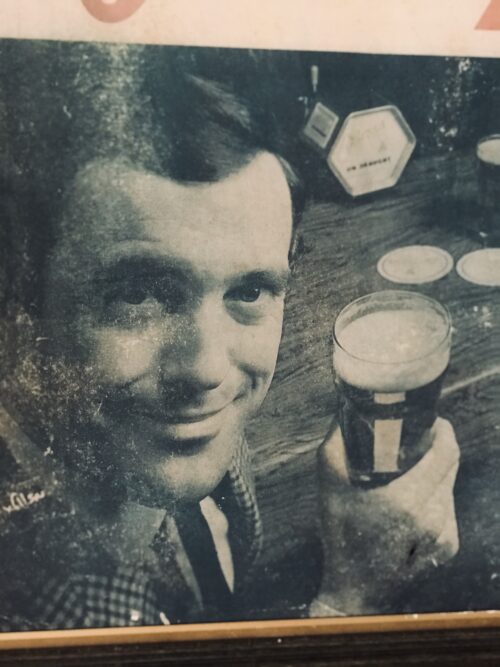
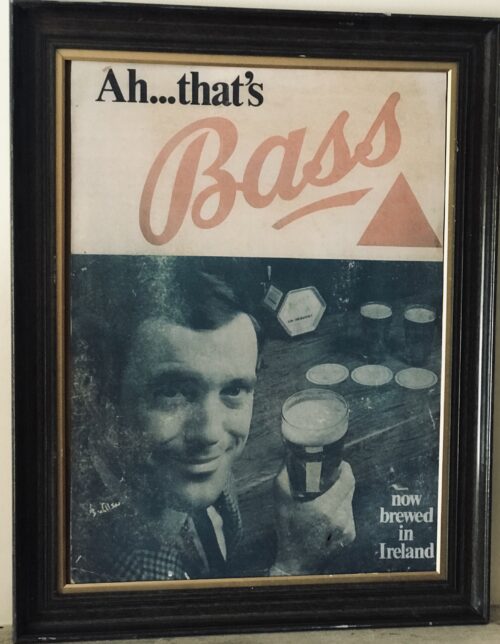
The former beer of choice of An Taoiseach Bertie Ahern,the Bass Ireland Brewery operated on the Glen Road in West Belfast for 107 years until its closure in 2004.But despite its popularity, this ale would be the cause of bitter controversy in the 1930s as you can learn below.
Founded in 1777 by William Bass in Burton-upon-Trent, Staffordshire, England.The main brand was Bass Pale Ale, once the highest-selling beer in the UK.By 1877, Bass had become the largest brewery in the world, with an annual output of one million barrels.Its pale ale was exported throughout the British Empire, and the company's distinctive red triangle became the UK's first registered trade mark. In the early 1930s republicans in Dublin and elsewhere waged a campaign of intimidation against publicans who sold Bass ale, which involved violent tactics and grabbed headlines at home and further afield. This campaign occurred within a broader movement calling for the boycott of British goods in Ireland, spearheaded by the IRA. Bass was not alone a British product, but republicans took issue with Colonel John Gretton, who was chairman of the company and a Conservative politician in his day.In Britain,Ireland and the Second World War, Ian Woods notes that the republican newspaper An Phoblacht set the republican boycott of Bass in a broader context , noting that there should be “No British ales. No British sweets or chocolate. Shoulder to shoulder for a nationwide boycott of British goods. Fling back the challenge of the robber empire.”
In late 1932, Irish newspapers began to report on a sustained campaign against Bass ale, which was not strictly confined to Dublin. On December 5th 1932, The Irish Times asked:
Will there be free beer in the Irish Free State at the end of this week? The question is prompted by the orders that are said to have been given to publicans in Dublin towards the end of last week not to sell Bass after a specified date.
The paper went on to claim that men visited Dublin pubs and told publicans “to remove display cards advertising Bass, to dispose of their stock within a week, and not to order any more of this ale, explaining that their instructions were given in furtherance of the campaign to boycott British goods.” The paper proclaimed a ‘War on English Beer’ in its headline. The same routine, of men visiting and threatening public houses, was reported to have happened in Cork.
It was later reported that on November 25th young men had broken into the stores owned by Bass at Moore Lane and attempted to do damage to Bass property. When put before the courts, it was reported that the republicans claimed that “Colonel Gretton, the chairman of the company, was a bitter enemy of the Irish people” and that he “availed himself of every opportunity to vent his hate, and was an ardent supporter of the campaign of murder and pillage pursued by the Black and Tans.” Remarkably, there were cheers in court as the men were found not guilty, and it was noted that they had no intention of stealing from Bass, and the damage done to the premises amounted to less than £5.
A campaign of intimidation carried into January 1933, when pubs who were not following the boycott had their signs tarred, and several glass signs advertising the ale were smashed across the city. ‘BOYCOTT BRITISH GOODS’ was painted across several Bass advertisements in the city.
Throughout 1933, there were numerous examples of republicans entering pubs and smashing the supply of Bass bottles behind the counter. This activity was not confined to Dublin,as this report from late August shows. It was noted that the men publicly stated that they belonged to the IRA.
September appears to have been a particularly active period in the boycott, with Brian Hanley identifying Dublin, Tralee, Naas, Drogheda and Waterford among the places were publicans were targetted in his study The IRA: 1926-1936. One of the most interesting incidents occurring in Dun Laoghaire. There, newspapers reported that on September 4th 1933 “more than fifty young men marched through the streets” before raiding the premises of Michael Moynihan, a local publican. Bottles of Bass were flung onto the roadway and advertisements destroyed. Five young men were apprehended for their role in the disturbances, and a series of court cases nationwide would insure that the Bass boycott was one of the big stories of September 1933.
The young men arrested in Dun Laoghaire refused to give their name or any information to the police, and on September 8th events at the Dublin District Court led to police baton charging crowds. The Irish Times reported that about fifty supporters of the young men gathered outside the court with placards such as ‘Irish Goods for Irish People’, and inside the court a cry of ‘Up The Republic!’ led to the judge slamming the young men, who told him they did not recognise his court. The night before had seen some anti-Bass activity in the city, with the smashing of Bass signs at Burgh Quay. This came after attacks on pubs at Lincoln Place and Chancery Street. It wasn’t long before Mountjoy and other prisons began to home some of those involved in the Boycott Bass campaign, which the state was by now eager to suppress.

An undated image of a demonstration to boycott British goods. Credit: http://irishmemory.blogspot.ie/
This dramatic court appearance was followed by similar scenes in Kilmainham, where twelve men were brought before the courts for a raid on the Dead Man’s Pub, near to Palmerstown in West Dublin. Almost all in their 20s, these men mostly gave addresses in Clondalkin. Their court case was interesting as charges of kidnapping were put forward, as Michael Murray claimed the men had driven him to the Featherbed mountain. By this stage, other Bass prisoners had begun a hungerstrike, and while a lack of evidence allowed the men to go free, heavy fines were handed out to an individual who the judge was certain had been involved.
The decision to go on hungerstrike brought considerable attention on prisoners in Mountjoy, and Maud Gonne MacBride spoke to the media on their behalf, telling the Irish Press on September 18th that political treatment was sought by the men. This strike had begun over a week previously on the 10th, and by the 18th it was understood that nine young men were involved. Yet by late September, it was evident the campaign was slowing down, particularly in Dublin.
The controversy around the boycott Bass campaign featured in Dáil debates on several occasions. In late September Eamonn O’Neill T.D noted that he believed such attacks were being allowed to be carried out “with a certain sort of connivance from the Government opposite”, saying:
I suppose the Minister is aware that this campaign against Bass, the destruction of full bottles of Bass, the destruction of Bass signs and the disfigurement of premises which Messrs. Bass hold has been proclaimed by certain bodies to be a national campaign in furtherance of the “Boycott British Goods” policy. I put it to the Minister that the compensation charges in respect of such claims should be made a national charge as it is proclaimed to be a national campaign and should not be placed on the overburdened taxpayers in the towns in which these terrible outrages are allowed to take place with a certain sort of connivance from the Government opposite.
Another contribution in the Dáil worth quoting came from Daniel Morrissey T.D, perhaps a Smithwicks man, who felt it necessary to say that we were producing “an ale that can compare favourably with any ale produced elsewhere” while condemning the actions of those targeting publicans:
I want to say that so far as I am concerned I have no brief good, bad, or indifferent, for Bass’s ale. We are producing in this country at the moment—and I am stating this quite frankly as one who has a little experience of it—an ale that can compare favourably with any ale produced elsewhere. But let us be quite clear that if we are going to have tariffs or embargoes, no tariffs or embargoes can be issued or given effect to in this country by any person, any group of persons, or any organisation other than the Government elected by the people of the country.
Tim Pat Coogan claims in his history of the IRA that this boycott brought the republican movement into conflict with the Army Comrades Association, later popularly known as the ‘Blueshirts’. He claims that following attacks in Dublin in December 1932, “the Dublin vitners appealed to the ACA for protection and shipments of Bass were guarded by bodyguards of ACA without further incident.” Yet it is undeniable there were many incidents of intimidation against suppliers and deliverers of the product into 1933.
Not all republicans believed the ‘Boycott Bass’ campaign had been worthwhile. Patrick Byrne, who would later become secretary within the Republican Congress group, later wrote that this was a time when there were seemingly bigger issues, like mass unemployment and labour disputes in Belfast, yet:
In this situation, while the revolution was being served up on a plate in Belfast, what was the IRA leadership doing? Organising a ‘Boycott Bass’ Campaign. Because of some disparaging remarks the Bass boss, Colonel Gretton, was reported to have made about the Irish, some IRA leaders took umbrage and sent units out onto the streets of Dublin and elsewhere to raid pubs, terrify the customers, and destroy perfectly good stocks of bottled Bass, an activity in which I regret to say I was engaged.
Historian Brian Hanley has noted by late 1933 “there was little effort to boycott anything except Bass and the desperation of the IRA in hoping violence would revive the campaign was in fact an admission of its failure. At the 1934 convention the campaign was quietly abandoned.”
Interestingly, this wasn’t the last time republicans would threaten Bass. In 1986 The Irish Times reported that Bass and Guinness were both threatened on the basis that they were supplying to British Army bases and RUC stations, on the basis of providing a service to security forces.
Origins : Co Limerick
Dimensions:35 cm x 45cm




Every country has its own slang terms or local colloquialisms and Ireland is no different. Many of the country's famous sayings are well-known worldwide, but there may be one or two you're not familiar with. No doubt you'll be wanting to experience the 'craic' for yourself as you explore your new surroundings, so we've put together this 'bang-on' guide to the local lingo!
Craic is probably the most popular and familiar slang phrase, simply meaning ‘fun’ or ‘banter’, just good times. It has origins with the Ulster Scots, who told of the crack, the Gaelic spelling not fully popularised in Ireland until the 1970s, when it was the catchphrase of the Irish-language TV show SBB ina Shuí.
Some other slang phrases might not be quite as familiar, and each region of Ireland has its own particular lingo, but here are some of the weird and wonderful words and phrases that might come in handy, and save you from making an eejit or a gowl of yourself!Gowl: An annoying person. Ah, ye GOW-EL ye!
Wisht: Shush! A handy one for in the cinema, or for chatterboxes in lectures.
Scarlet: Embarrassed. Hopefully not because you’ve been a gowl. I was such an eejit, I was scarlet!
Wired to the moon: Maybe you’ve been out late, enjoying the craic a little too much, and you’ve grabbed a triple espresso on the way to the lecture theatre? You’re wired to the moon.
Wee: Small, but everything in Ireland is wee. If Dwayne ‘The Rock’ Johnson were to visit Ireland, he’d be Wee Dwayne.
Quare: Meaning ‘great’. It’s quare weather out today! Also used for ‘very’. It’s quare warm today!
Savage: Something excellent. Was it a good craic last night? Oh, it was savage!
The Jacks: The toilets, fir jacks for the mens, ban jacks for the ladies, not to be confused with…
Banjaxed: Broken. Ruined.
Happy out: Simply happy. You’re enjoying the craic, having a quare old time, you’re happy out.
Sure look at it: A suitable reply to nearly any statement. Isn’t this weather grand? Ah, sure look at it!
Ossified: Very drunk. Regretfully so. See also: langers, blathered, locked.
The messages: If you hear people referring to doing the messages, they're going shopping. Does anyone need anything? I’m heading out to do the messages.
The press: An Irish term for the cupboard. You might want to check you’ve enough biscuits in the press, before you set off to do the messages.
Are you okay?: If the barman is asking you this, he’s not checking on your state of being, simply wanting to know what you want to order.
I’ve a throat on me: Thirsty. Just don’t get too ossified and make an eejit of yourself!
Me ould segotia, me ould sweat, me ould flower: Best friend.
Aculsha: An old term of affection, from a chuisle mo chroí, ‘pulse of my heart’
A soft day: A drizzly rainy, misty day.
Acting the maggot: Being silly, making a nuisance. An annoying person.
Making a bags of it: Making a mess of something.
Cat altogether: Something bad. If the weather is terrible, it could be cat altogether out there.
Even if you’re apprehensive about using some of these phrases in your conversations, it’ll certainly help you understand what your new Irish friends are saying. Ah, it was quare warm yesterday, I’d meant to do the messages, but I’d quite the throat on me. I got utterly langers, made a right gowl of meself acting the maggot, and I’m totally banjaxed today. Savage!

| An Garda Síochána | |
|---|---|

Shield of An Garda Síochána |
|
| Common name | Gardaí |
| Motto | Working with communities to protect and serve (Irish: Ag obair le Pobail chun iad a chosaint agus chun freastal orthu) |
| Agency overview | |
| Formed | 22 February 1922 |
| Preceding agencies | |
| Employees | 17,652 (total as of 2019) 14,250 sworn members 2,944 civilian staff 458 reserves |
| Annual budget | €1.426 billion (2015) |
| Jurisdictional structure | |
| National agency | Republic of Ireland |
| Operations jurisdiction | Republic of Ireland |
 |
|
| An Garda Síochána area of jurisdiction in dark blue | |
| Size | 70,273 km² |
| Population | 4,588,252 (2011) |
| General nature | |
| Headquarters | Garda Headquarters, Phoenix Park, Dublin |
| Officers | 14,708 incl. 458 reserves (2019) |
| Civilians | 2,944 (2019) |
| Elected officer responsible | |
| Agency executive | |
| Regions |
4
|
| Facilities | |
| Stations | 564 |
| Vehicles | 2,815 (2017) |
| Boats | Garda Water Unit |
| Aircraft | 2 helicopters 1 fixed-wing surveillance aircraft |
| Canines | Garda Dog Unit |
| Horses | Garda Mounted Unit |
| Website | |
| www.garda.ie | |
| ^ "Working with Communities to Protect and Serve" is described as mission statement rather than formal motto | |


| Name | From | Until | Reason |
|---|---|---|---|
| Michael Staines | February 1922 | September 1922 | resigned |
| Eoin O'Duffy | September 1922 | February 1933 | dismissed[note 2] |
| Eamon Broy | February 1933 | June 1938 | retired |
| Michael Kinnane | June 1938 | July 1952 | died |
| Daniel Costigan | July 1952 | February 1965 | resigned |
| William P Quinn | February 1965 | March 1967 | retired |
| Patrick Carroll | March 1967 | September 1968 | retired |
| Michael Wymes | September 1968 | January 1973 | retired |
| Patrick Malone | January 1973 | September 1975 | retired |
| Edmund Garvey | September 1975 | January 1978 | replaced[note 3] |
| Patrick McLaughlin | January 1978 | January 1983 | retired[note 4] |
| Lawrence Wren | February 1983 | November 1987 | retired |
| Eamonn Doherty | November 1987 | December 1988 | retired |
| Eugene Crowley | December 1988 | January 1991 | retired |
| Patrick Culligan | January 1991 | July 1996 | retired |
| Patrick Byrne | July 1996 | July 2003 | retired |
| Noel Conroy | July 2003 | November 2007 | retired |
| Fachtna Murphy | November 2007 | December 2010 | retired |
| Martin Callinan | December 2010 | March 2014 | resigned[47][48][note 5] |
| Nóirín O'Sullivan | March 2014(acting) November 2014 (permanent)[49] | September 2017 | retired[50][note 6] |
| Dónall Ó Cualáin | September 2017 (acting) | September 2018 | |
| Drew Harris | September 2018 | - |




Aran Islands: on the road to Synge’s Chair, on Inishmaan. Photograph: Andy Haslam/New York Times